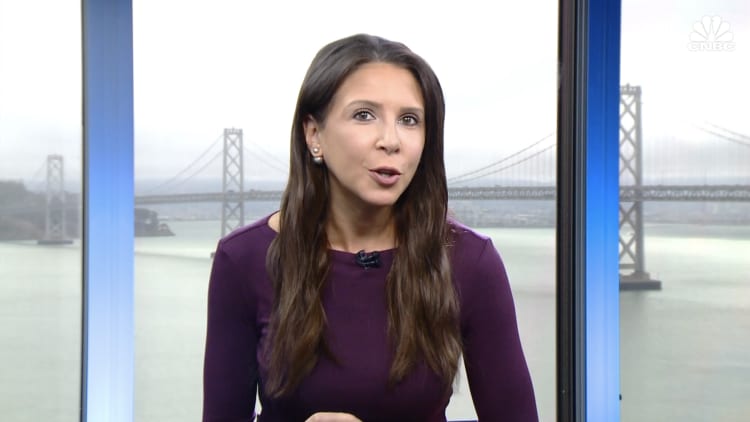PayPal crypto chief Jose Fernandez da Ponte on battling Tether, USDC

PayPal on Monday became the first major U.S. fintech company to offer its own crypto token with a dollar-pegged stablecoin known as PayPal USD, making big promises of how it can move money between millions of crypto investors.
The company is entering an extremely crowded market already dominated by stablecoins like tether and USDC, at a time when the hype over cryptocurrency has largely fizzled and prices have been mostly stable with no big run-ups since 2022.
But the company’s chief crypto exec tells CNBC that the payment processor is confident in its timing – and its competitive advantage in the space.
“Stablecoins are the killer application for blockchains right now,” said Jose Fernandez da Ponte, PayPal’s senior vice president and general manager of blockchain, crypto, and digital currencies.
“There are inherent advantages in cost, programmability, settlement time,” continued da Ponte, adding that the market is primed for new entrants that are fully backed – and unlike tether, fully regulated.
“Stablecoins are something that we cannot just sit out,” da Ponte added.
Da Ponte denied a Bloomberg report that the payments processor paused development of its stablecoin in February. At the time, both the SEC and New York’s financial regulator, NYDFS, were putting pressure on Paxos Trust, a New York-based crypto financial services firm helping PayPal issue its stablecoin. Regulators wanted the firm to discontinue its relationship with Binance. Paxos ultimately stopped issuing Binance’s own dollar-pegged token, dubbed BUSD.
The launch comes after crypto liquidity plummeted in the last year and a half.
In March, two of the banks that were friendliest to the crypto sector, Silvergate and Signature, and the biggest bank for tech startups, Silicon Valley Bank, all failed in less than a week. The collapse of the crypto banking trifecta rippled into the stablecoin market, with Circle’s USD Coin, or USDC, briefly losing its peg to the U.S. dollar.
Since the banking crisis earlier this year, the added gridlock at the on-and-off ramps connecting traditional finance with the digital asset market has also complicated getting cash into the crypto sector.
The total market cap of stablecoins has plunged since its peak, dropping 25% to $120 billion, according to data from TradingView. Tack on the SEC’s regulatory crackdown on the sector and the protracted bear market pricing, and it’s not a particularly hospitable environment for crypto-centric enterprises.
But da Ponte argues this troubled backdrop is exactly why PayPal is poised to succeed.
“We are bringing to bear all the infrastructure that we have built over the years in terms of being regulated in multiple countries, in terms of risk management, in terms of compliance, and we think that that’s a key asset that is a difference in the approach that we are taking,” he said.

The broad appeal of stablecoins
Stablecoins are a subset of the crypto ecosystem that investors can typically rely on to maintain a…
Read More: PayPal crypto chief Jose Fernandez da Ponte on battling Tether, USDC
